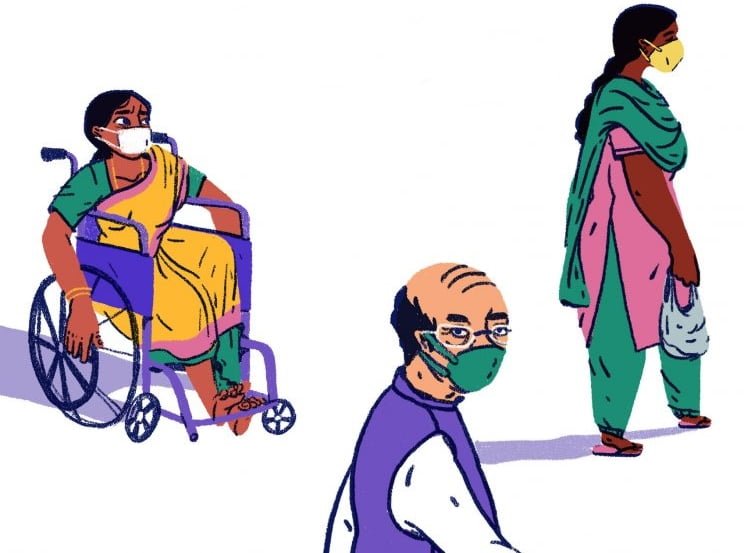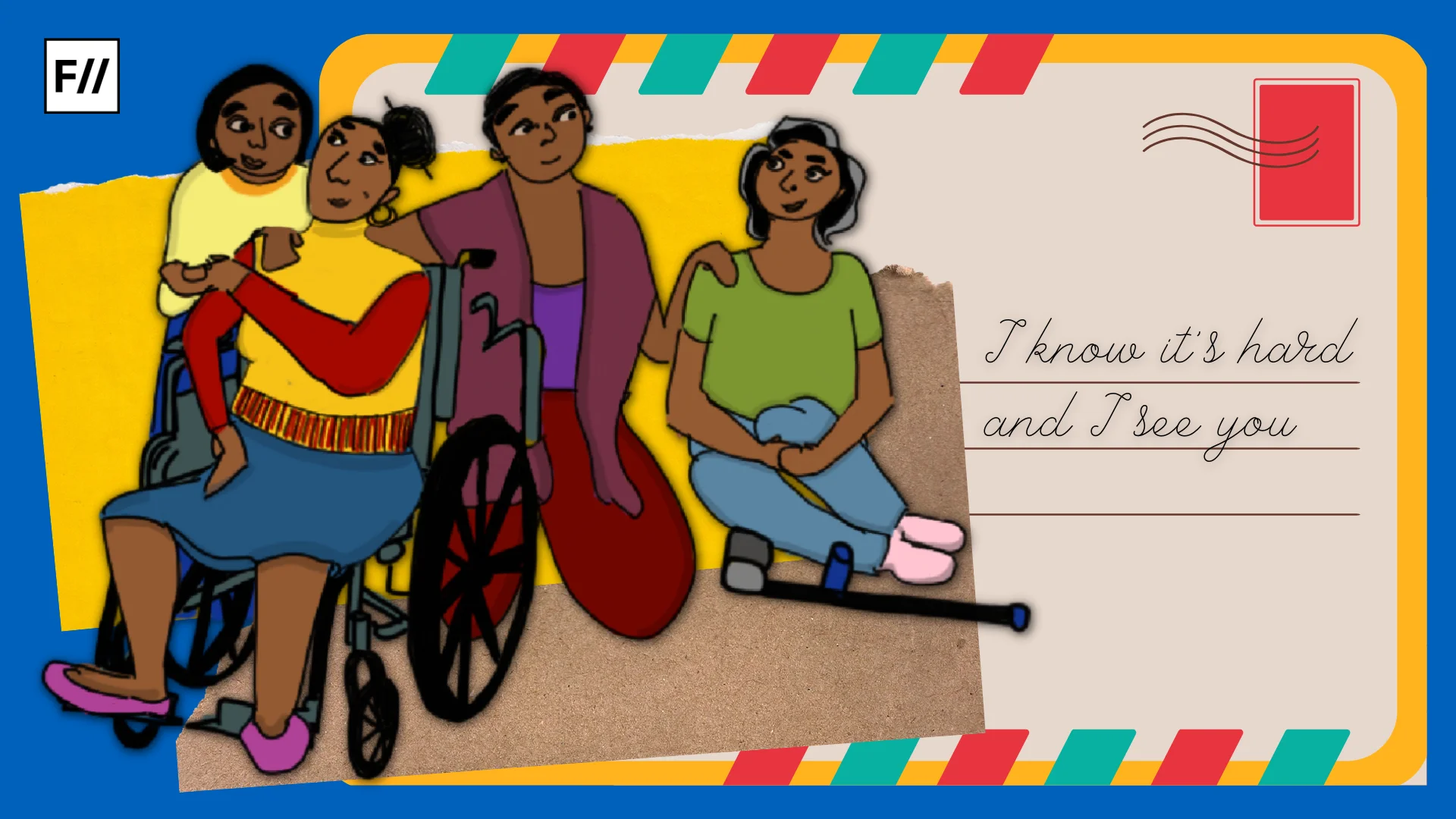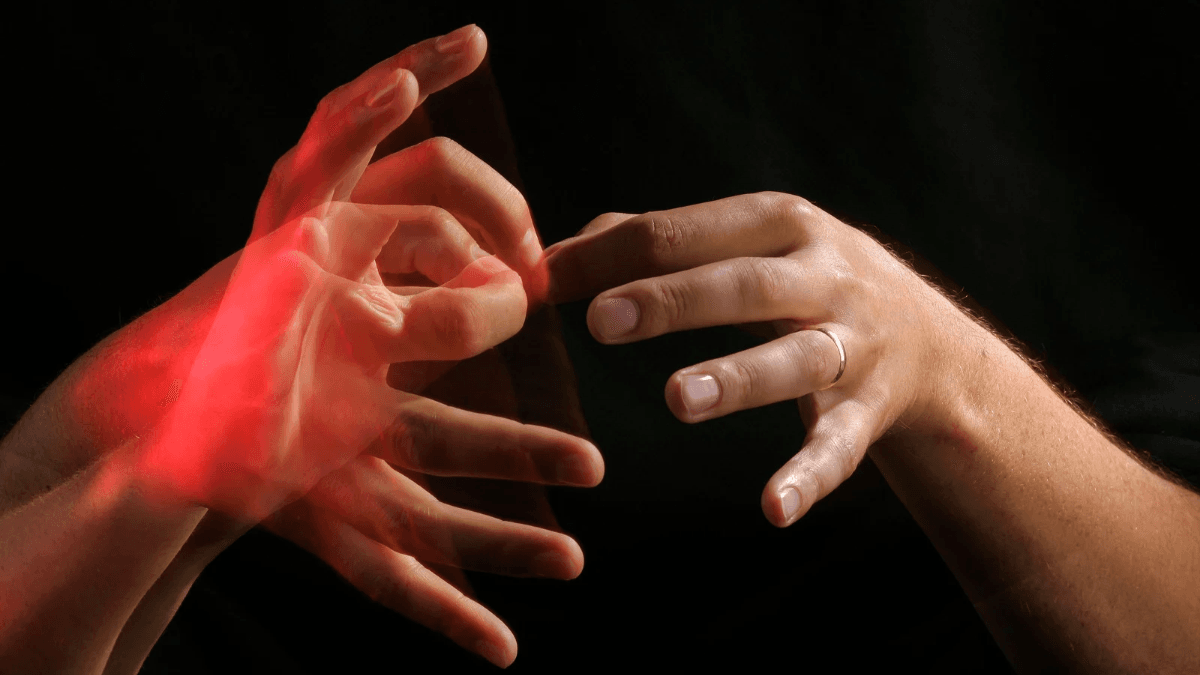As disabled people, we have a lot of emotions around our “first times’’ that happen throughout our lives: First time going to a grocery store, first time wearing our shoes all by ourselves, first time tying laces as an adult, first time tying our hair. Our milestones are entirely different from the non-disabled population and yet we thrive.
We start from scratch again and again, re-training our brain to perform everyday activities that most take for granted.
Every first time should be celebrated.
Also read: How I Learnt To Take Up Space As A Disabled Individual
When I took a walk in the park limping along with my crutch, I began to notice a significant factor: there were hardly any people with visible disabilities to be seen on the roads, in grocery stores, in ice cream parlours. I couldn’t see anybody “like me’’.
As I entered my teenage, I began to observe the world around me, taking in every detail. Being a queer disabled person, I would visit queer spaces, events and the like. When I took a walk in the park limping along with my crutch, I began to notice a significant factor: there were hardly any people with visible disabilities to be seen on the roads, in grocery stores, in ice cream parlours. I couldn’t see anybody “like me’’. Given how I had no disabled role model growing up, I was confused about my identity and continued living life as my inauthentic self, never feeling like I belonged anywhere. In the movies they said that not fitting in would be fun, but in real life, not fitting in meant alienation: “Being the loneliest of all“. Youth with disabilities hardly move out of their homes owing to an important factor: Inaccessible spaces, within the ambit of which it also gets difficult for them to access and understand others’ minds and perceptions as well.
To an 5’0 anxious, disabled woman such as me, with an intense fear of open spaces, a grocery store with plenty of shelves and large spaces in between, translate to a large hill to climb instead of a casual walk on a Sunday afternoon.
Malls are dangerous territory. Personally, I hate the slippery, pristine floors of the malls that my crutch tends to slip on and I fear falling due to my already unstable balance. Going to a grocery store alone would mean a lot of things to a person: It is a five-ten minutes free from the family cacophony for many, a chance to grab a quick smoke for others, a stroll to catch up on a friend with over call. But for me, a disabled person with social anxiety and agoraphobia, it would be an arduous journey: a journey from the car to the inaccessible front steps of the grocery store, climbing each step with great labour while holding my crutch in the other hand and my sling bag on the other, the floor of the grocery store so slippery that my crutch keeps slipping. It does not help that I myself feel terrified of falling and embarrassing myself as I take each step (a common sign of agoraphobia) while I deal with my uneasy balance. It is only when I finally reach the ice cream pile and picking up my favorite flavour of ice cream that I can privately smile to myself, lauding my achievement.
Going to the cashier is another journey while taking out my wallet from my bag on my back. This is me, taking up space in a grocery store, something so mundane, yet for someone like me, a journey.
Going to the cashier is another journey while taking out my wallet from my bag on my back. This is me, taking up space in a grocery store, something so mundane, yet for someone like me, a journey.
In a patriarchal society such as ours, for a disabled woman, one manifestation of inaccessible spaces is how she is judged every time she dresses up and puts on makeup. These inaccessible spaces are mostly populated by inaccessible minds refusing to accommodate the realities of disabled lives into their ableist worldview such as disregarding the agency and de-sexualizing a disabled woman. Their inaccessible eyes otherise the disabled woman by asking intrusive questions, pitying them and looking at the disabled population for inspiration porn instead of ensuring they have access to accessibility.

Also read: Taking Up Space: Any Match For A Disabled Bride, Sima Aunty?
I needed to learn how to Take Up Space in my own body full of surgical scars, too many cuts and bruises from falling too much on uneven, inaccessible ground in my college, learn how to treat my body with the kindness it deserves, reclaim my own schedules, listen to my body when it needs extra care, create healthy boundaries with my body. The “hustle culture” – like the queues at a coffee shop with everyone rushing to get their takeaways before they head to work (feet going tap, tap, tap in impatience) – is very ableist in nature and disregards accessibility needs.
Non-disabled people often view accessibility as an add-on, as a decoration and not a necessity. It’s often seen as the cherry you put on top of the cake and not the cake itself. There can never be an inclusive world unless this attitude doesn’t change.
‘Taking Up Space’ is a column where the author writes about her experiences of navigating so-called mainstream spaces as a disabled womxn. Not an attempt to preach or inspire, she attempts to have conversations on taking up space within her own reality, in conversations and physical spaces such as classrooms, seminars, grocery stores and by extension, in an ableist society rendering disabled individuals as persons with no agency of their own.
Featured Image Source: Riya/RevivalDisabilityMag
About the author(s)
Anusha Misra prefers to be called nu, identifies as a disabled, queer woman. They are a disability justice author, curator and editor. They are the founder and Editor-in-chief of Revival Disability Magazine, a magazine on Disability, Sexuality and Intersectional Ableism. They firmly believe that Intersectionality gives disabled women the emotional skin to survive in the world and that vulnerability should be celebrated. According to them, the revolution would be incomplete without disabled joy and dissent.




